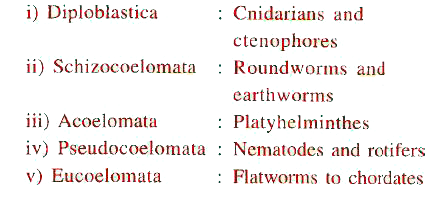Which of following are correct.
B2H6 in non-planar.
B2H6 undergo symmetrical cleavage with PF3,CO and (C2H5)3N
B2H6 undergo unsymmetrical cleavage with NH3,CH3NH2,(CH3)2NH
Be(2)H6(s),Ga2H6,Al2H6 have two type of bonds (2C−2e bond as well as 3C−2e bond)
The correct Answer is:A, B, C, D
To determine which of the statements regarding B2H6 (Diborane) are correct, we will analyze each statement based on the information provided in the video transcript.
1. Analyzing the Structure of B2H6:
- The structure of B2H6 consists of two boron atoms and six hydrogen atoms.
- It has four terminal hydrogen atoms and two bridging hydrogen atoms.
- The terminal hydrogens are arranged such that two are above the plane of the boron atoms and two are below the plane.
- The bridging hydrogens connect the two boron atoms, leading to a non-planar structure.
Hint: Remember that the arrangement of atoms in a molecule can affect its geometry and bonding characteristics.
2. Statement 1: B2H6, Ga2H6, and Al2H6 have two types of bonds: two-center two-electron bonds and three-center two-electron bonds.
- This statement is correct. In diborane, there are four two-center two-electron bonds (between boron and terminal hydrogens) and two three-center two-electron bonds (involving the bridging hydrogens).
- The presence of these bond types is characteristic of compounds in group 13.
Hint: Identify the types of bonds in a molecule by examining how electrons are shared between atoms.
3. Statement 2: B2H6 undergoes symmetrical cleavage with PF3CO and triethylamine.
- This statement is also correct. B2H6 can react with larger molecules like PF3CO and triethylamine, leading to symmetrical cleavage, producing BH3 and other products.
Hint: Symmetrical cleavage occurs when a molecule breaks evenly, distributing the fragments equally.
4. Statement 3: B2H6 undergoes unsymmetrical cleavage with NH3, CH3NH2, and CH3N2NH3.
- This statement is correct as well. When B2H6 reacts with smaller amines such as NH3, it undergoes unsymmetrical cleavage, resulting in different products.
Hint: Unsymmetrical cleavage results in different products, often due to the size and electron-donating ability of the reactants.
5. Conclusion:
- All four statements regarding B2H6 are correct based on the analysis of its structure and the nature of its reactions with other compounds.
Final Answer:
All four statements regarding B2H6 are correct.
- The structure of B2H6 consists of two boron atoms and six hydrogen atoms.
- It has four terminal hydrogen atoms and two bridging hydrogen atoms.
- The terminal hydrogens are arranged such that two are above the plane of the boron atoms and two are below the plane.
- The bridging hydrogens connect the two boron atoms, leading to a non-planar structure.
- This statement is correct. In diborane, there are four two-center two-electron bonds (between boron and terminal hydrogens) and two three-center two-electron bonds (involving the bridging hydrogens).
- The presence of these bond types is characteristic of compounds in group 13.
- This statement is also correct. B2H6 can react with larger molecules like PF3CO and triethylamine, leading to symmetrical cleavage, producing BH3 and other products.
- This statement is correct as well. When B2H6 reacts with smaller amines such as NH3, it undergoes unsymmetrical cleavage, resulting in different products.
- All four statements regarding B2H6 are correct based on the analysis of its structure and the nature of its reactions with other compounds.
All four statements regarding B2H6 are correct.
Topper's Solved these Questions
- BOOK - RESONANCE ENGLISHCHAPTER - P-BLOCK ELEMENT (BORON AND CARBON FAMILY)EXERCISE - Exercise-2 Part-IV : COMPREHENSIONS11videos
P-BLOCK ELEMENT (BORON AND CARBON FAMILY)
- BOOK - RESONANCE ENGLISHCHAPTER - P-BLOCK ELEMENT (BORON AND CARBON FAMILY)EXERCISE - Exercise-317videos
P-BLOCK ELEMENT (BORON AND CARBON FAMILY)
- BOOK - RESONANCE ENGLISHCHAPTER - P-BLOCK ELEMENT (BORON AND CARBON FAMILY)EXERCISE - Exercise-2 Part-II : SINGLE AND DOUBLE VALUE INTEGER TYPE23videos
P-BLOCK ELEMENT (BORON AND CARBON FAMILY)
- BOOK - RESONANCE ENGLISHCHAPTER - P BLOCK ELEMENTSEXERCISE - PART -II23videos
P BLOCK ELEMENTS
- BOOK - RESONANCE ENGLISHCHAPTER - P-BLOCK ELEMENTS (HALOGEN & NOBLE GASES)EXERCISE - APSP PART-322videos
P-BLOCK ELEMENTS (HALOGEN & NOBLE GASES)
Similar Questions
Which of following is correct : -
View SolutionWhich of following is correct ?
View SolutionWhich of the following are correct ?
View SolutionWhich of the following are correct reactions ?
View SolutionWhich of the following are correct processes ?
View SolutionWhich of the following are correct
View SolutionWhich of the following are correct :
View SolutionWhich of the following are correct ?
 View Solution
View SolutionWhich of the following are correct ?
View SolutionWhich of the following are correct?
View Solution

